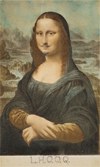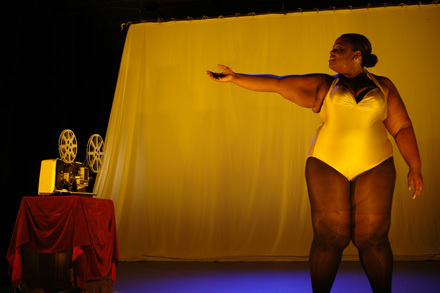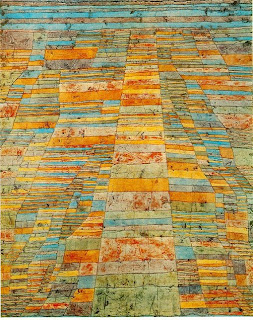
Julia Scher - always there-surveillance bed, 2000

Janine Antoni, Loving Care, 1993
The End(s) of the Museum includes work by fourteen artists. Some of them have created work especially for this exhibit, others are showing previous work relevant to the questions raised by the exhibition.

|

| |||
| |||
| |||
| |||
| |||
| |||
| |||
| |||
| |||
| |||
| |||
| |||
|
 Barbara Kruger, Untitled (Your Comfort is My Silence), 1981
Barbara Kruger, Untitled (Your Comfort is My Silence), 1981pg 349, Kruger embraced the commercial side of art, noting, " I wanted them (my art works) to enter the marketplace because I began to understand that outside the marketplace there is nothing- not a piece of lint, a cardigan, a human being."
Jeff Koons says, "The market is the critic now."
How do we view the Institution of the Museum today?
I view it as a place that I can go to see a presentation of what critics and art world players want to show me as the "cream of the crop" of art work that is being made past and present.
-Heartney says on pg 347, "Artists have taken aim particularly at museums, those loftl establishments that serve as gatekeepers, deciding which artists will go down in art history and which will not. -- also see futurist manifesto-- funny.
2. What strategies do artists use to expose corruption within the museum?
according to Heartsley, pg 350, artists dig into museum collections, creating arrangemants of objects that underscore the social and political agendas underlying patterns of patronage and collection. others deflate curatorial pretensions with pseudo-exhibitions that mack the practices of that profession. Artists may appropriate and reinvent the apparatus by which art is presented to the public, Or it may document the way in which art is presented, revealing the artifice at work in supposedly "neutral" presentations of art and other museum artifacts.
Also, Moma had a show in 1999 called "Museum as Muse" which allowed artists to make an axibition about the museum--
The Museum as Muse: Artists Reeflect ... blurb follows-- interesting!
|
Do you feel there is a corruption within that system? Why or why not?
I am sure there is but I usually don't think about it much-- just more negativity to cloud my vision. I think there is because there is corruption on every level of every situation in life from the bottom on up-- that is just the way it is.
How does the museum play a role in your own life? What was positive or negative in that experience?
Living in NY for the past 16 years, they have played a huge role. I must admit a large enjoyment factor. I go to museums as an event, a pleasurable outing to enjoy an evening or afternoon out. For years, I go to the Moma when it's free on Friday nights and enjoy music in the garden during the summer concert series, and the same at the guggenheim I have not once thought about corruption of that side of things-- I usually experience the moment there and make judgement calls on what I liked or didn't like.
What alternatives do artists have to the traditional avenue of the museum if any?
Well-- like what we're doing for our show to benifit Doctor's with out borders-- The pop up shop-- get a group of friends together and have a show anywhere anytime-- studio shows-- wealthy friends hosting an evening celebrating your work- The museum is soo far removed from my world-- I only know guerilla style showing and the occasional group gallery show... sad but true.
What does the institution serve & in what way?
What? or Whom maybe? It serves the public on a grand scale. It serves people. It is a place that can bring art to the masses and give anyone a chance to participate.




 Alighiero e Boetti Aerei 1978 © DACS, London 2007
Alighiero e Boetti Aerei 1978 © DACS, London 2007























